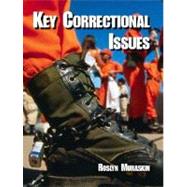
| Foreword | |
| Preface | |
| About the Authors and Contributors | |
| Introductory Remarks | |
| The Correctional Key: In/Out, Roslyn Muraskin | |
| Correctional Overview, Roslyn Muraskin | |
| Correctional History, Roslyn Muraskin | |
| Issues in Correction | |
| Changing Goals of Corrections, Roslyn Muraskin | |
| Introduction to ""Prisoner Reentry: The Law of Imprisonment,""Roslyn Muraskin | |
| Prisoner Reentry The Law of Imprisonment, Jeremy Travis | |
| Suicide in Prisons and Jails, Christine Tartaro | |
| Table of Contents provided by Publisher. All Rights Reserved. |
The New copy of this book will include any supplemental materials advertised. Please check the title of the book to determine if it should include any access cards, study guides, lab manuals, CDs, etc.
The Used, Rental and eBook copies of this book are not guaranteed to include any supplemental materials. Typically, only the book itself is included. This is true even if the title states it includes any access cards, study guides, lab manuals, CDs, etc.